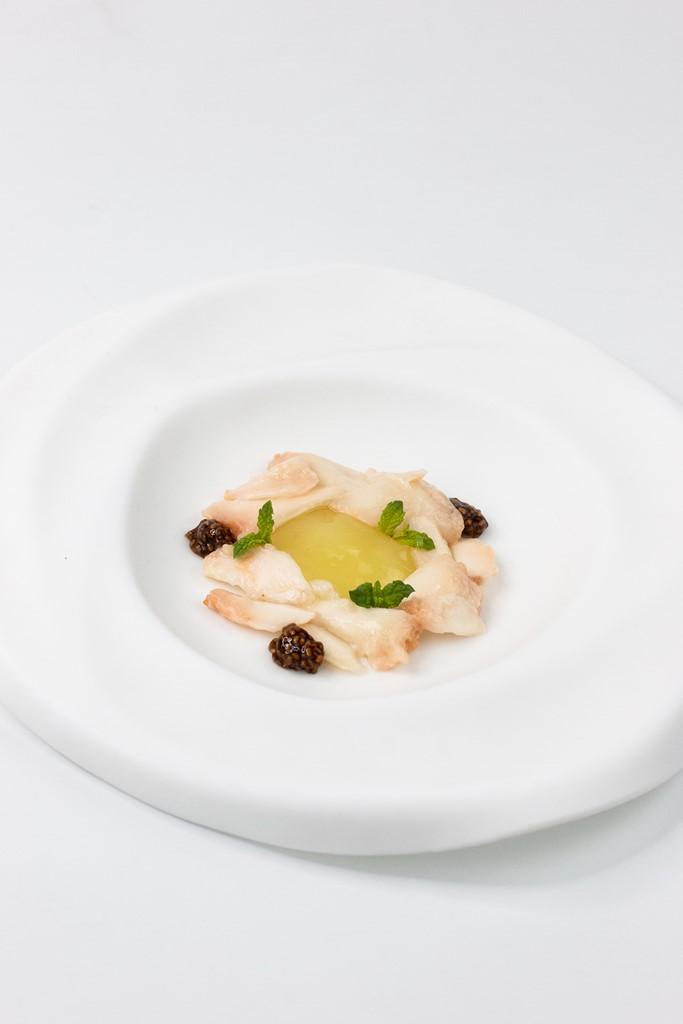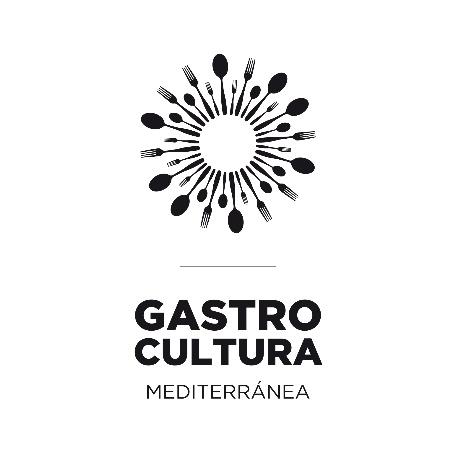GASTRONOMIC APPLICATION OF ENZYMES



Collaborating with:


Enzymes are hitherto unknown ingredients in restaurants, although they have been used in the food industry for years. By using these ingredients in our restaurant, bar or pastry shop, we will have the opportunity to achieve textures that could not be achieved otherwise.
We have developed this dossier with the aim of providing knowledge and making known how to use them and the options they can offer us.
That is why we will explain what enzymes are, and we will delve into each one of them so that you can understand them and apply them in your own gastronomic recipes.

12 Albedo de limón con chirimoya
13 Helado de naranja
15 Pâte de fruit de naranja
16 Lemon curd
ENZYMES: WHAT THEY ARE AND HOW THEY ARE USED
Enzymes are proteins that catalyze (speed up) biochemical reactions that occur naturally in all living organisms.
Enzymes are natural origin proteins present in most plant or animal foods that we consume on a daily basis, and which, applied to food products, can be used to modify some of their properties They are commonly used to improve and transform products on an industrial scale, but until now very few restoration methods and applications have been developed.

Enzymes, unlike other texturizers, are very specific. This means that each enzyme will only work with one type of fiber or molecule. This compound that reacts is called substrate, and is transformed into the so-called products.
As you can see in the image, for enzymes to work they have to fit the substrate in question, so they will only work when the substrate is compatible.


Enzymes are of natural origin. Most have been generated through the fermentation of natural products of plant or animal origin, or even extracted directly from fruits or vegetables.

There are different parameters that can affect the proper functioning and performance of enzymes, and that we will take into account when using them. This occurs due to the shape of the enzyme and the way the substrate fits with it, that is, due to its specificity.
• The product: If the food does not contain the substrate that the enzyme needs, there will be no reaction. So, if we apply pectinase to a food that does not contain pectin, it will not undergo any change.
• Substrate accessibility: The substrate must be accessible for the enzyme, since, if they do not meet and do not fit, no change can occur. The main barrier that we find is the external skin of the vegetables since the impermeability of the skin does not allow the enzyme to penetrate. We will have to make some cuts in the skin, puncture it or peel it so that the enzyme can penetrate.
• Proportion: If there is little substrate, even if we add a lot of enzymes, we will not achieve more effect. If, on the other hand, we have a lot of substrate and little enzyme, it will work, although slowly.
• Temperature: It is one of the most important factors to take into account. The enzyme has a temperature curve on which its activity depends, much like the temperatures used for fermentation:


® At 0º C or less, the reaction stops because, as the product is frozen, so the two parts cannot fit together. As the temperature rises, this change is recoverable.
® From 0 to 60°C the enzyme is active. In general, most enzymes have an optimum temperature where their activity is maximum. It is usually between 45°C and 60°C, depending on the enzyme.
® At 70°C, or more, the enzyme is irreparably destroyed, since by heat the shape of the enzyme is modified and coagulates, so that the substrate can no longer fit with the enzyme anymore.
• Acidity: Enzymes are also destroyed if they leave a certain pH range and become inactive, although in the kitchen it is very difficult to reach these extreme values since they are either too acidic or too alkaline.
We have developed a line of Töufood Enzymes intended for use in restaurants and haute cuisine. This project is still open today and with research in constant development in order to expand the range with a much broader spectrum of applications.

Pectinase is the enzyme responsible for degrading pectin in fruits and vegetables, softening them and giving them a cooked texture, but without cooking.

Cellulase is the enzyme responsible for breaking down cellulose in fruits and vegetables, thus breaking down the hard parts of vegetables.

Invertase is the enzyme responsible for transforming sugar into inverted sugar, enhancing the sweetness of the ingredients and providing them with antifreeze and moisturizing properties.

Amylase is the enzyme responsible for breaking down starch in fruits and vegetables, giving starches creamy textures and adding sweetness.

Glucosidase is the enzyme responsible for degrading the dextrins resulting from the application of amylase. It greatly increases the degree of sweetness of the food.

Lipase is the enzyme responsible for breaking down fats and triglycerides, modifying their aromatic profile and enhancing mature flavors.

Naraginase is the enzyme that breaks down naringin, a bittering product in plant ingredients, whether they are fruits or vegetables. Depending on each vegetable, it will be more concentrated in the skin, the interior, or distributed throughout the piece.


Narinigine
Sanskrit 'Naringa' (Nãriṅga) means 'orange'
Flavonoid present in the peel of some citrus fruits and other vegetables, and is mainly responsible for its bitter taste. It has antioxidant and antimutagenic properties.

By using Naraginäse, we break down the bitter components of vegetables, eliminating or significantly reducing this taste in the food. By minimizing the bitter, other secondary flavors, originally masked, flourish, so that originally bitter fruits and vegetables manage to have flavors, sweet, herbaceous, floral or acid, very subtle in the natural ingredient.

To activate the enzyme, it must be hydrated with water or a non-greasy liquid and placed in contact with the bitter parts of the food. There are three application methods depending on the result we want:


• Impregnation: By previously making multiple holes in the product, and adding the enzymatic solution, we achieve homogeneous degradation throughout the product.
• Injection: We achieve internal enzymatic degradation, leaving the exterior intact.

To obtain maximum performance, it is recommended to peel or puncture the skin over its entire surface and impregnate with 2 or 3 cycles of 90-95% vacuum, and if desired, carry out a final cycle with sealing.

As mentioned in the introduction, temperature and pH affect the activity and therefore the performance of Invertase. Invertase activity graphs for pH and temperature are shown below:
Another factor to take into account for the enzyme to work is the amount of naringin contained in the food to be treated: since naraginase only acts on naringin, it will only work with products that contain it. Depending on the proportion of naringin, and where it is, we will obtain one result or another.
Below is a brief list of some fruits and vegetables that contain naringin.
Vegetables that contain it: Grapefruit - Lemon - Lime - Orange - Cherry - Tangerine - BergamotMano de buddha - Tomato - Endive - Oregano - Cocoa

As a result of our research, different techniques applied to this enzyme have been determined. Each technique will provide us with a change in texture and a different result that we will apply according to the consistency we want to achieve.



When naringin is broken down enzymatically, it is transformed into another similar molecule, naringenin. Naringenin is a component that does not provide any flavor, so, in conclusion, we eliminate the bitter flavors of these ingredients thanks to this enzyme.


Lemon, like many citrus fruits, is a great source of naringin, which is found mainly in the skin and albedo of the fruit, parts that we normally discard, in general, due to their bitter taste. Using the naraginase enzyme and eliminating this bitter taste, we will obtain sweet and subtle flavors that will allow us to take advantage of all these parts with a very characteristic and little-known lemon flavor.


Collaborating with:


Custard apple
For the basil seeds
4 g Basil seeds
5 g Water
20 g Simple syrup
15 g Coffee
Sear on the Josper, trying to keep them from losing their shape.
3. Carefully debone and peel as they will be very fragile
1. Place the seeds in the water for two minutes.
2. Separately, mix the coffee with the syrup.
3. Place the previously hydrated seeds in the coffee and syrup mix.
4. Book for service.

1. On a plate, place a base of albedo cream and outline with the custard apple flakes.

2. Place the basil seeds, distributed around the custard apple flakes.
3. Grate some yuzu on top and finish with some basil sprouts.
Orange honey
500 g Sugar
150 g Water
300 g Orange zest

25 g Töufood Invertäse

1. In a food processor, lightly crush the orange zest with the sugar, and in an airtight container, reserve the mixture at room temperature for 24 hours.
2. In a saucepan, add the water with the sugar and the orange zest and heat the mixture to 70ºC until the sugar dissolves. Lower the temperature to 55°C, and add the invertase enzyme. Vacuum packing.
3. Let the enzyme act, maintaining the mixture for 4 hours at 55ºC. Reserve in the fridge for 24 hours.
4. Finally, heat the mixture to facilitate its extraction and strain through a "superbag" or cheesecloth, extracting the molasses from the solid part.


5. Remove from heat, and add citric acid, dissolving in the mixture. Next, introduce the mixture into a mold in the shape of orange segments and, with the help of a spatula, remove the excess.

6. Reserve in the fridge, and unmold once the paste has crystallized.

(preparation above)
30 g Sugar

90 g Butter
2. Once again, introduce the crushed lemon along with the butter and sugar and blend for 15 minutes, until a very fine texture is obtained. Reserve in the fridge.


Collaboratin with:




